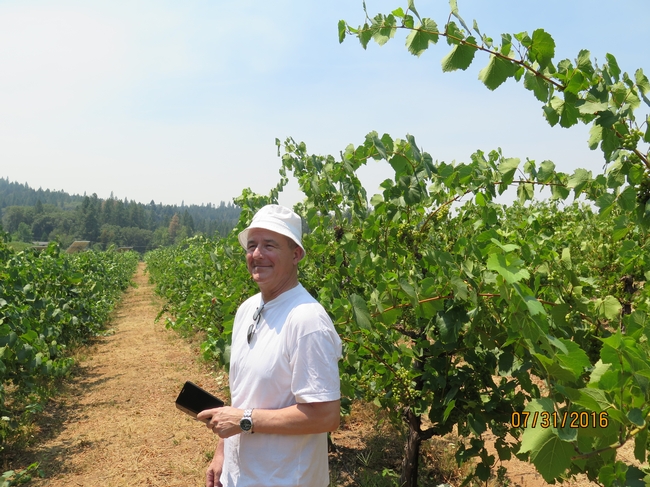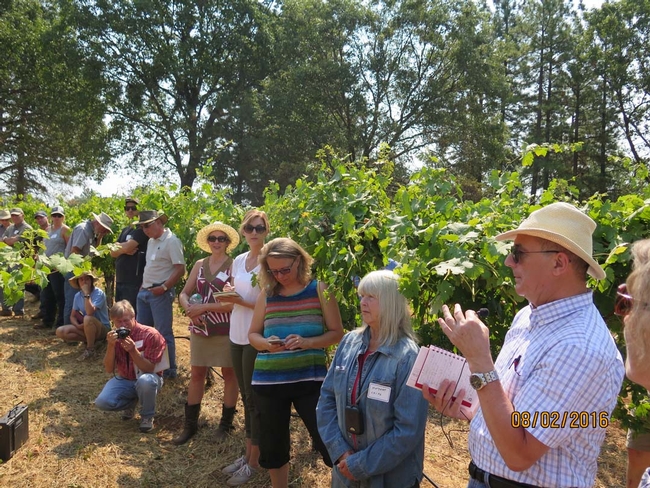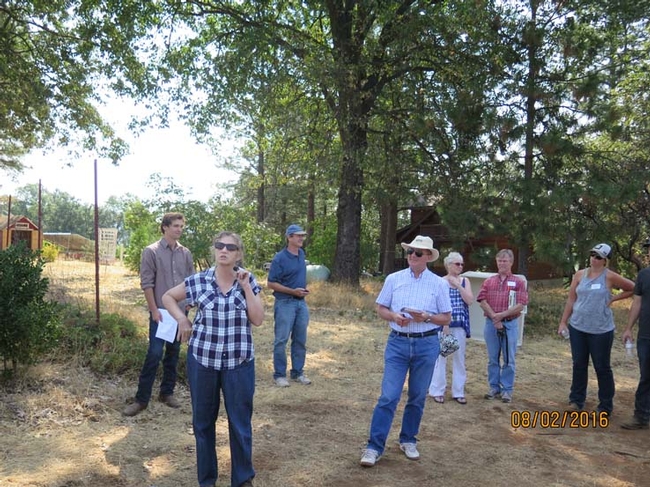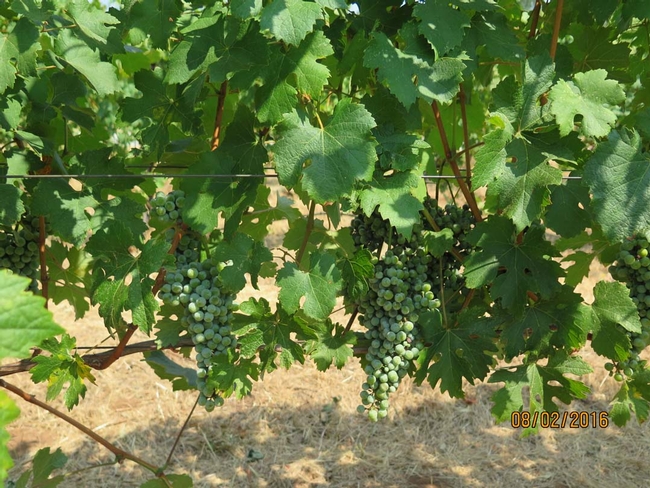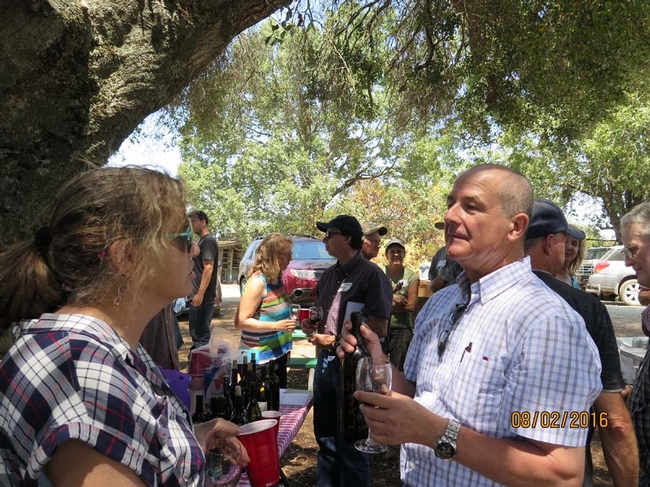Prof. Vittorino Novello in a foothill vineyard.
And wow, what an incredibly knowledgeable and gracious scholar. Vittorino wasAttendees listened to Professor Vittorino Novello discuss Italian grape culture during foothill tours.
Sheila Bush discusses Nebbiolo culture in the shade at Sumu Kaw vineyard, El Dorado county.
Vittorino commented that all of Sheila's observations as to the difficulty of growing Nebbiolo-the vigor, the need to cane prune, curbing yields to 3-4 tons to try to try to increase color, the highly tannic wines, were true to the variety. The nameNebbiolo is early to bud, and late to ripen.
I'll cover more on the Vittorino tours in my future blogs. To take a look at my recap of the tours, and Vittorino's evening seminars, go to the postings on my webpage here. Tour attendees got to taste all of the wines from the vineyards visited.
